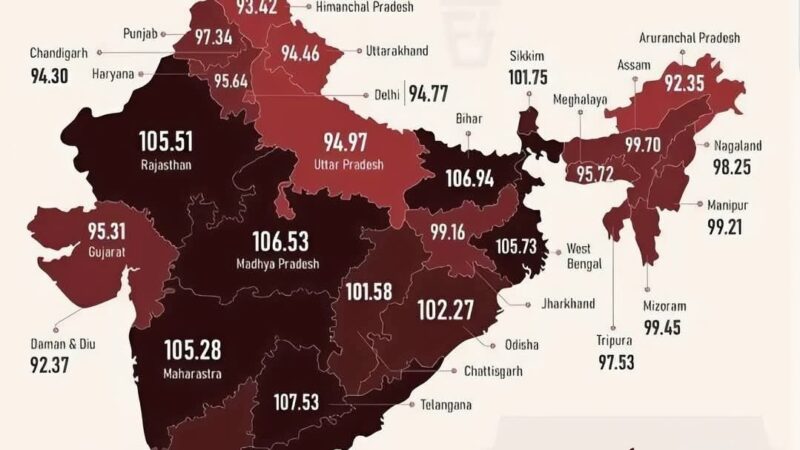Understanding the Mullaperiyar Dam: History, Safety Concerns, and Potential Consequences

Introduction
The Mullaperiyar Dam, located on the Periyar River in the Indian state of Kerala, has been a focal point of controversy and concern due to its age, structural integrity, and the potential consequences of its failure. This article delves into the details of the dam, the studies regarding its decommissioning, the potential consequences of a dam failure, and comparisons with dam collapses worldwide and recent calamities in Wayanad.
Dams Upstream and Downstream of Mullaperiyar
Above Mullaperiyar Dam:
The Idukki Dam, situated on the Periyar River, is located downstream of the Mullaperiyar Dam. The Idukki Dam is a significant hydroelectric project and one of the highest arch dams in Asia. It plays a crucial role in controlling water flow and generating electricity for the region.
After Mullaperiyar Dam:
The Vaigai Dam, located downstream of the Mullaperiyar Dam, is another important structure that regulates water supply for irrigation and drinking purposes in Tamil Nadu.
Studies on Mullaperiyar Dam and Its Decommissioning
Several studies have been conducted to assess the structural integrity and safety of the Mullaperiyar Dam:
1. Central Water Commission (CWC) Studies:
The CWC has conducted various studies and inspections, generally concluding that the dam is safe under current conditions, provided regular maintenance and monitoring are carried out.
2. Expert Committee Reports:
Multiple expert committees have been set up by the Supreme Court of India to evaluate the safety of the dam. These reports often highlight the need for modernization and stringent monitoring but differ in opinions regarding the immediate decommissioning of the dam.
3. Seismic Vulnerability Assessments:
Studies have indicated that the Mullaperiyar Dam is located in a seismically active zone. The risk of an earthquake-triggered collapse has been a significant point of contention between Kerala and Tamil Nadu, the states that share the water resource.
Consequences of a Dam Failure
If the Mullaperiyar Dam were to fail, the consequences would be catastrophic:
1. Immediate Flooding:
The release of a massive volume of water would lead to immediate and extensive flooding downstream. This could inundate several towns and villages, causing widespread loss of life and property.
2. Impact on Idukki Dam:
The sudden surge of water could potentially overwhelm the Idukki Dam downstream, leading to its failure as well. This would exponentially increase the scale of the disaster.
3. Environmental Damage:
The flooding would cause severe environmental damage, including soil erosion, loss of biodiversity, and long-term impacts on the ecosystem.
4. Economic Consequences:
The destruction of agricultural lands, infrastructure, and homes would lead to enormous economic losses, disrupting livelihoods and regional economies.
Comparing with Global Dam Collapses
Banqiao Dam, China (1975):
The failure of the Banqiao Dam due to heavy rainfall resulted in the death of approximately 171,000 people and left millions homeless. The catastrophe highlighted the importance of robust dam design and effective emergency response mechanisms.
Vajont Dam, Italy (1963):
A landslide into the reservoir caused a massive wave that overtopped the dam, killing around 2,000 people. This incident underscores the need for comprehensive geological assessments and monitoring of dam sites.
Teton Dam, USA (1976):
The collapse of the Teton Dam due to structural flaws led to extensive flooding and economic losses. This event emphasizes the critical importance of engineering excellence and regular inspections.
Recent Calamity in Wayanad
Wayanad, a district in Kerala, recently faced severe flooding and landslides due to heavy monsoon rains. The region’s topography, characterized by steep slopes and extensive forest cover, makes it particularly vulnerable to such disasters. The calamity in Wayanad highlights the broader implications of inadequate infrastructure, deforestation, and climate change on regional stability and safety.
Conclusion
The Mullaperiyar Dam stands as a testament to the engineering challenges and environmental concerns associated with aging infrastructure. The potential consequences of its failure necessitate immediate attention to safety measures, regular monitoring, and comprehensive risk assessments. Learning from global dam collapses and recent local calamities like those in Wayanad, it is imperative to adopt a proactive and preventive approach to ensure the safety and well-being of the millions who depend on these crucial water resources.

“At Brutnow media we tell you stories of change and those who dared to go the road less taken. Brutnow is a digital platform for your daily bite on what’s going on in your socio-economic landscape. We give you glimpses of the entrepreneurial world and highlight young thinkers and builders who may be the next big thing. We also analysis political, economical, technological header for the current scenarios. Our stories feature conversations ,helpful resources and insights from the industry that could be the motivation and push you’re looking for the company and your growth. We have interviewed and analyzed over 50+ entrepreneurs and counting , documenting their journey and struggles and their take on the future. An ecosystem of entrepreneurs”




